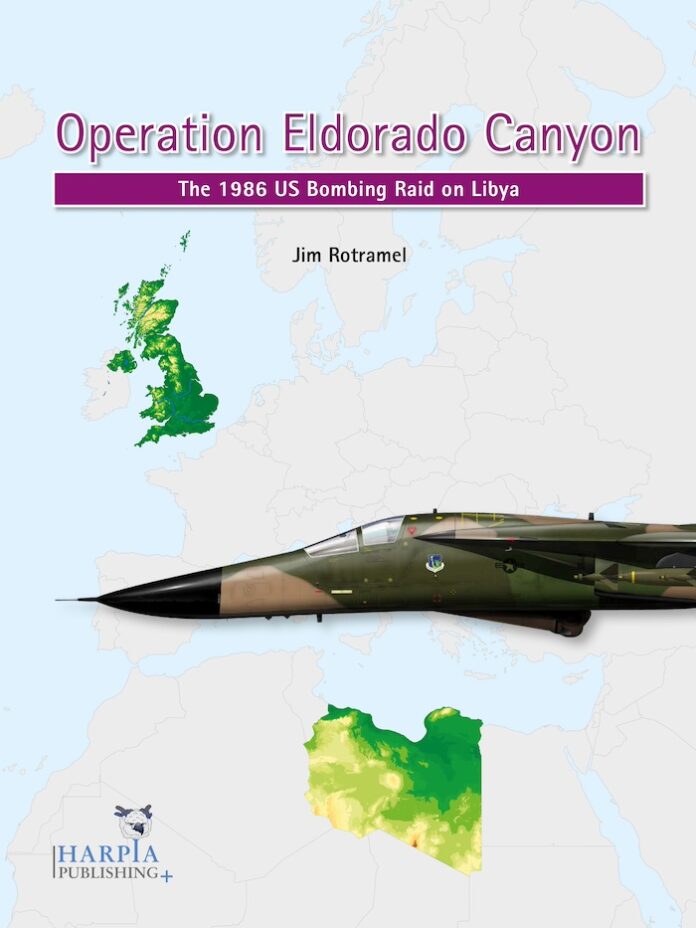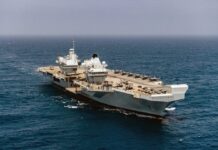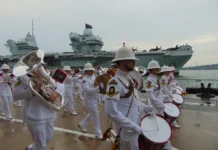
Operation Eldorado Canyon. The 1986 US Bombing Raid on Libya. By Major Jim Rotramel USAF (Ret). Harpia Publishing, 1090 Wien, Austria, 2024. ISBN 978-1-95039-412-8
Reviewed by David Hobbs
The author is a former F-111F weapons system officer whose expert knowledge of the aircraft and the weapons it was capable of carrying is apparent throughout the text. After leaving the air force he worked for the USN at NAS Patuxent River where he helped develop automated weapon planning programmes for the F/A-18A/D and other types.
His knowledge of USN carrier-borne strike fighters and their weapon systems thus allows him to describe their operations with a similarly impressive level of detail. In 1986 these aircraft represented the cutting-edge of aviation technology and their operation demanded new skills from aircrew and the understanding of new concepts by planning staffs. The F-111F, for instance, had new weapon and navigation computers with 64 kB of memory into which data was loaded from 8-inch floppy discs created by a data transfer module the size of two two-drawer filing cabinets. Primarily, this is a book about the US bombing attack on targets in Libya in 1986 in an operation known officially as Operation Eldorado Canyon but the author also describes the attacks by USN aircraft on Libyan warships in Operation Prairie Fire a month earlier. In Eldorado Canyon targets to the west were attacked by F-111Fs that flew all the way from US bases in UK with air-to-air refuelling support; targets to the east were attacked by A-6Es from the aircraft carriers America and Coral Sea in the Mediterranean. Rotramel’s book is an excellent example of a carefully-researched, factual account of an operation that is both informative and very readable. It is well up to Harpia’s usual high standards and is beautifully illustrated with colour photographs of many of the actual aircraft that flew the mission together with maps and drawings.
Rotramel follows a logical structure with an opening chapter that describes the escalating scale of terrorist attacks on US citizens and interests across the Middle East which led up to the decision to attack specific targets in Libya where it was believed that terrorists were trained. Subsequent chapters describe Operation Prairie Fire, the planning process that preceded Operation Eldorado Canyon and then a day-by-day account of its execution in April 1986. The USN attacks on eastern targets have a chapter dedicated to them, as does the long flight back to the UK by the F-111Fs and their tankers. Immediately after the operation the USAF stated that the names of participating aircrew would remain ‘forever classified’ due to fears that the long memories of extremists would put them and their families at risk of personal retribution. The author respects this and refers to aircrew by their callsigns with the suffix ‘A’ indicating pilots and ‘W’ indicating weapons systems operators or WSOs, for instance Jewel 61A. The USN did not classify the names of its aircrew but for the sake of commonality Rotramel also refers to them by their callsigns. In contrast to earlier Harpia titles this book uses American spelling throughout as this better reflects the author’s original text and is consistent with the use of direct quotes to highlight aspect of the operation.
Apart from providing an accurate account of the operation, Rotramel provides us with a text that gives insight into lessons that were learned and how the analysis of Eldorado Canyon’s shortcomings helped to improve the planning of subsequent air strike operations. Advanced mission planning software, stand-off weapons such as air-launched cruise missiles and the integration of air-to-air tankers with strike aircraft missions are examples. The most important lesson learned, however, is that the best way in which mission success can be achieved is by political leaders defining the desired objective and then leaving it to the unit commanders and their expert teams to plan and execute the mission, making all the necessary tactical decisions. This is not a new lesson but politicians seem unable to accept that their governments have spent millions of dollars training these people and must trust them rather than dictate ill-considered parameters from the top down. As the author says in his chapter on lessons learned, they must make sure the aircrew have what they need, answer their questions and then sit on their hands and shut up.
There is much that will interest naval professionals in this book. The planning of an unusual mission led to the massing of tankers at UK airfields but families were not made sufficiently aware what was going on to play their part in maintaining secrecy in the age of intrusive press speculation. The French Government’s refusal to allow the US jets to fly over its territory forced the strike fighters to follow a course from Lakenheath in the UK out over the Atlantic, south off the west coast of Spain and through the Straits of Gibraltar to reach Libya, the longest strike mission ever carried out by tactical fighters. They had to be supported by the largest tanker force ever assembled for a single mission and the planning staff had to arrange for the carrier aircraft to be over their targets at the same second as the F-111Fs that had taken-off in the UK and been airborne for five hours. A knowledge of this operation is important to Australians today because the RAAF will have to carry out similar tanker-orientated long-range missions if it is to provide the support it claims to be able to give the RAN in extended Pacific operations. Understanding what went right and, perhaps more importantly, what went wrong with Eldorado Canyon will help RAN planners to grasp the reality of what is required if long-range air operations are to be considered a practical reality or to understand that they may not be as easy to mount as many air theorists would have us believe.
In summary, this is an informative book with a fascinating level of detail that has much to tell us about constituent long-range air operations within the sort combined operations in which the RAN and RAAF must be expert. There is much in it that will interest and inform a wide range of naval professionals and I recommend it highly.


